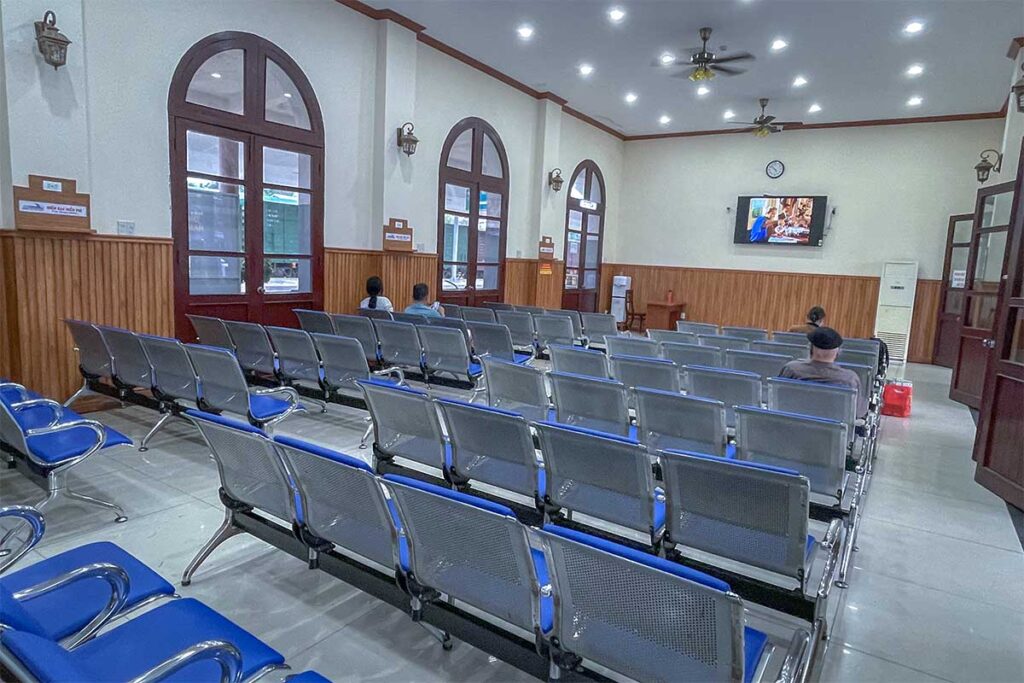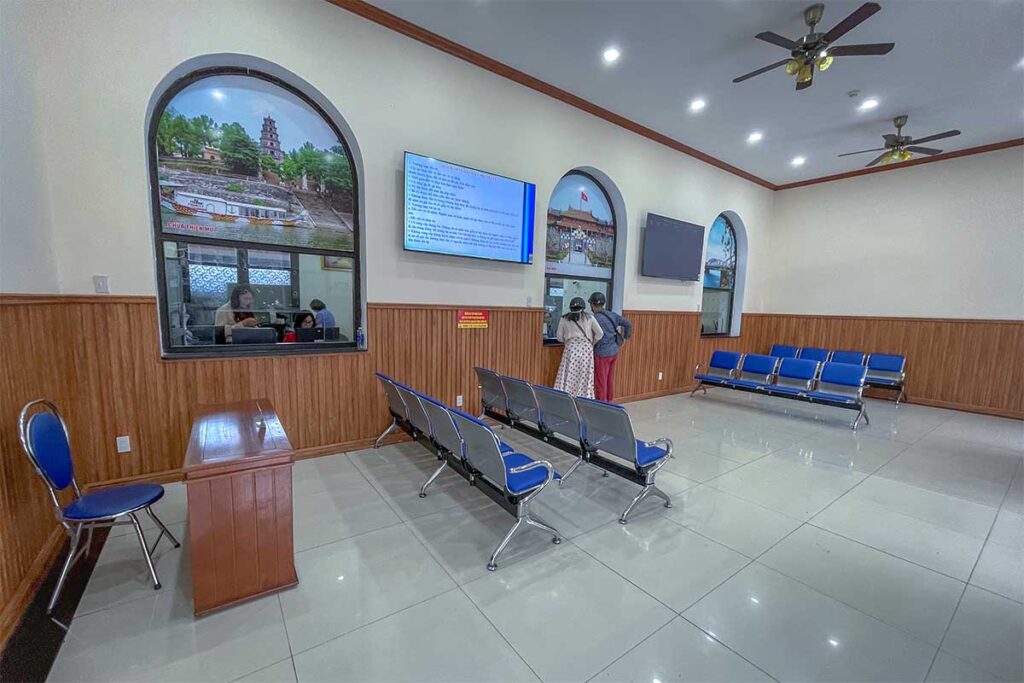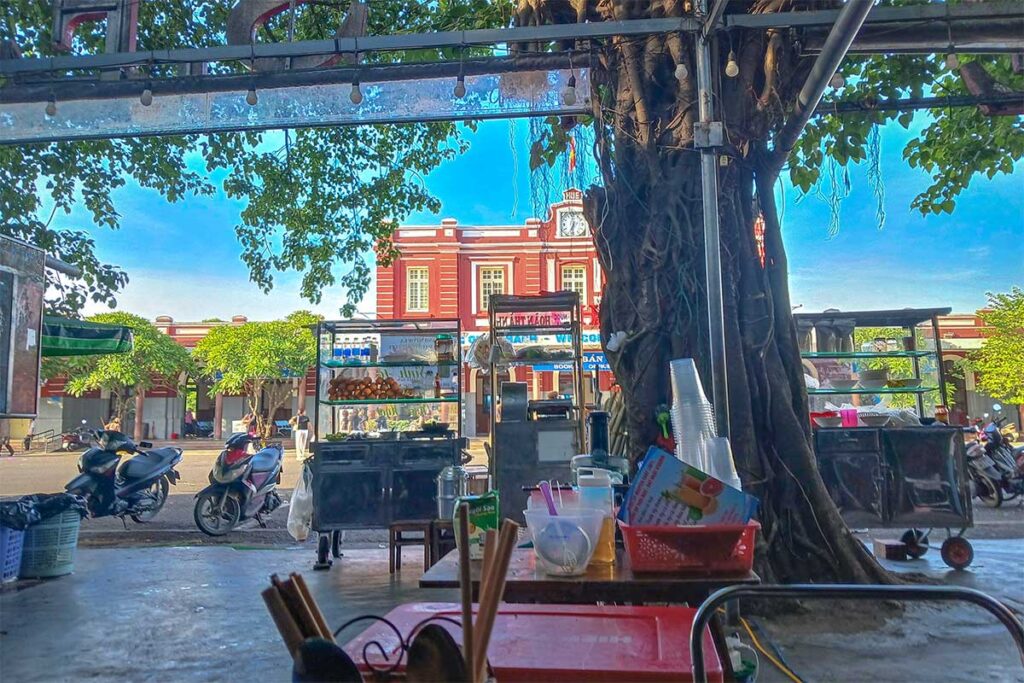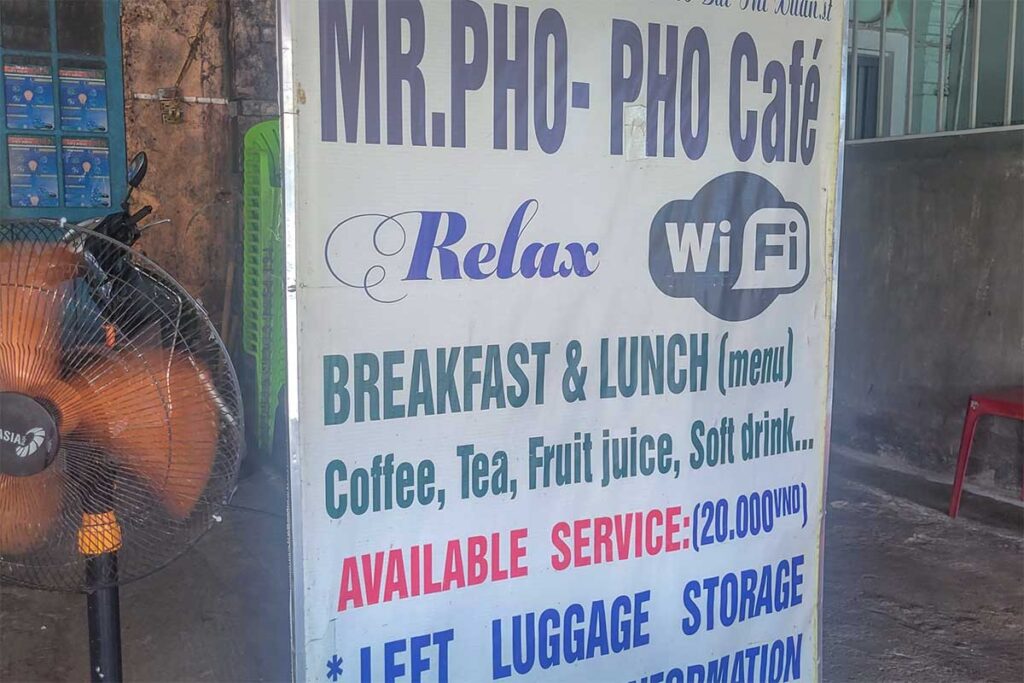History of Hue Train Station
Hue Railway Station was built by the French colonial government in 1902 and opened to the public in 1906. Its architecture reflects early 20th-century French design and remains one of Vietnam’s more charming historical train stations.

During wartime, the station played a key role as a hub for revolutionary movements and military transport. In the Vietnam War, it was occupied by snipers during the Battle of Hue before being retaken by U.S. forces. Locally, it’s also referred to as Tran Van Cao Station, a name adopted in 1945 in honor of the revolutionary musician and figure.
Train routes and destinations
Why travel by train to or from Hue?
Taking the train to or from Hue is a great option for many travelers. Vietnam’s train network runs along the scenic North-South Reunification Line, and several stretches—particularly between Hue and Da Nang—offer stunning views of the coastline and mountains. Train travel is generally more comfortable and feels safer than buses. It also allows you to avoid the hassle of airports and road travel. However, for long distances such as Hue to Hanoi or Ho Chi Minh City, flying may be more time-efficient.
Where you can go from Hue by train
Hue is a major stop along Vietnam’s North-South railway, with connections in both directions.
Southbound destinations
- Da Nang – Short, scenic ride; gateway to Hoi An
- Nha Trang – Beach city further down the coast
- Ho Chi Minh City (Saigon) – Long-distance, usually overnight
Northbound destinations
- Dong Hoi – Closest station to Phong Nha-Ke Bang National Park
- Vinh – Midway point in north-central Vietnam
- Ninh Binh – Great alternative to Halong Bay or Sapa
- Hanoi – Northern capital, major transport hub
Regional and local trains
There are also short-distance trains to nearby places like Dong Ha and Lang Co, but they’re used more by locals and less by tourists. Still, it’s possible to hop on one if you’re looking for an alternative day trip.
Travel times (Approximate)
- Hue to Da Nang: 2.5 to 3.5 hours
- Hue to Dong Hoi: 3.5 to 4.5 hours
- Hue to Ninh Binh: 10 to 11 hours
- Hue to Hanoi: 13 to 14 hours
- Hue to Nha Trang: 11 to 12 hours
- Hue to Ho Chi Minh City: 18 to 20+ hours
Types of trains
SE Trains (SE1, SE3, SE5, SE7)
These are the most common and comfortable trains used by tourists. They offer soft seats and sleeper cabins with air-conditioning, and are generally reliable and punctual.
Slower local trains
Less common for travelers, these make more stops and can be cheaper but slower and less comfortable.
Recommended train trips from Hue
1. Hue to Da Nang

This is one of the most scenic train journeys in Vietnam, winding through the lush Hai Van Pass with panoramic views of the coastline, jungle-covered hills, and the South China Sea. Compared to buses and cars that go through a tunnel, the train gives you elevated, uninterrupted views you simply won’t get otherwise. It’s a slow, relaxing ride with big open windows—perfect for photography and enjoying the landscape. The SE1 and SE3 morning trains are particularly great for clear views and softer light.
- Travel time: ~2.5 to 3.5 hours
- Heritage Express Option: Some private operators attach upgraded carriages (like the “Heritage Express”) to regular SE trains. These offer nicer interiors, refreshments, and more comfort for a small premium.
- Where to go next: From Da Nang, it’s easy to reach Hoi An by taxi or shuttle (~45 mins).
2. Hue to Dong Hoi

This route is great for travelers heading to Phong Nha-Ke Bang National Park, a UNESCO-listed region known for its enormous cave systems, jungle treks, and dramatic limestone landscapes. The train journey itself passes through tranquil countryside—rice paddies, river crossings, and small rural towns—offering a scenic and comfortable alternative to bus travel. It’s a great way to break up the long route north, especially if you’re planning to continue to Ninh Binh or Hanoi.
Dong Hoi is the nearest train station to Phong Nha. From there, it’s about 45 minutes by taxi or shuttle to the village area where most accommodations are located.
- Travel time: ~3.5 to 4.5 hours
- Tip: Take a morning train to arrive early enough for an afternoon cave tour or a peaceful riverside evening.
Booking tickets
Where to Book
There are several easy ways to book train tickets for travel to or from Hue:
- Online: Use the official Vietnam Railways website or third-party platforms like Baolau and 12Go. These are reliable and allow seat selection and e-tickets.
- At the Station: Hue Railway Station has ticket counters where you can buy tickets in advance or even on the day of travel (though popular routes may sell out).
- Via Travel Agents or Hotels: Many hotels and local agents can book train tickets for you. They usually charge a small commission but it’s convenient and often includes printed tickets.
Classes and pricing
Vietnamese trains offer multiple classes—each suited to different comfort levels and travel durations.
Soft seat
- Air-conditioned, cushioned, reserved seating.
- Best for short trips like Hue to Da Nang or Dong Hoi.
- Comfortable enough for daytime journeys.
Hard Seat
- Wooden or thinly padded bench-style seats, usually in open carriages.
- Not recommended for tourists unless on a very short local route and no other options are available.
Soft sleeper
- Air-conditioned cabin with 4 beds (bunks).
- Best option for long overnight trips like to Hanoi or Ho Chi Minh City.
- Relatively clean, private, and safer for luggage and rest.
Hard Sleeper
- 6 beds per cabin (more cramped, less private).
- Not recommended unless soft sleeper is fully booked.
Price example
- Hue to Da Nang: ~100,000–160,000 VND depending on train and class
- Hue to Hanoi (soft sleeper): ~600,000–900,000 VND
- Hue to Saigon (soft sleeper): ~800,000–1,200,000 VND
For maximum comfort on long journeys, consider upgraded tourist carriages operated by private companies (like Violette or Livitrans), available on select SE trains.
Hue Railway Station facilities and layout
Hue Railway Station is small and simple, but it has everything you need for a comfortable train journey. Located near the city center, the station offers basic amenities managed by both Vietnam Railways and private businesses.
Waiting Area & Comfort
- The main waiting room is air-conditioned and equipped with fans, offering a cool and relatively clean space to relax before your train departs.
- Plenty of seating is available, though it may get crowded during peak hours.
- Free Wi-Fi is available in the waiting area and works reasonably well.
- A charging station is available inside the waiting room.

Toilets
- Free to use and generally clean, though can have a slight odor at times.
- Toilets are located on the main platform and in the booking office building.
Buying tickets
- Tickets can be purchased at the booking counters inside the terminal, either on the day of travel or in advance.
- Staff speak basic English and are helpful with directions.
- You’ll need your passport or ID to book tickets.

Luggage storage
- The station itself does not offer an official left-luggage service.
- However, directly across the street is Mr. Pho Café, a popular and trusted place where travelers can store bags safely for a small fee (~20,000 VND per bag).
- The storage area is clean and monitored, and the owner is known for being kind and helpful to travelers.
Shops and Food
- On the platform, there are kiosks and stalls selling snacks, drinks, coffee, and even beer—you can bring these onboard.
- Across the car park, you’ll find a row of inexpensive restaurants and food stalls, good for a quick bite before or after your trip.
Transport access
- Taxis and motorbike taxis are always waiting outside the station, even for early or late trains.
- Grab (car or motorbike) is also widely available and more reliably priced than street taxis.
- To avoid scams, use the Grab app or agree on a fare with taxi drivers before boarding.
Other notes
- Train announcements are made in both Vietnamese and English, which helps with navigating departures.
- The boarding process is simple—staff often guide passengers to the right platform or waiting zone.
Travel tip: Mr. Pho for luggage storage and food

Right across the street from Hue Railway Station, Mr. Pho Café is a local favorite among travelers. It’s more than just a small eatery—it’s also the best place near the station to store your luggage safely for the day (around 20,000 VND per bag). The café is clean, friendly, and reliable, with security cameras watching over stored bags.

Mr. Pho himself is known for his kindness and helpfulness, often assisting travelers with directions, Wi-Fi, and even Grab bookings. The food is simple but well-prepared—banh mi, pho, fried noodles, and Vietnamese coffee—perfect for a quick meal while waiting for your train.
Highly recommended if you arrive early, have a delay, or just need a place to rest and eat before or after your journey.
Location of Hue Railway Station
- Address: 2 Bui Thi Xuan Street, Hue City
- Hue Railway Station is located about 2 km southwest of the Imperial City and around 3 km from the main tourist hotel areas near Le Loi and Vo Thi Sau streets.
Landmarks nearby:
- A short walk from Bao Quoc Temple and Phu Cam Cathedral
- Conveniently located on the route to Tu Duc Tomb and other southern imperial sites if you’re traveling from the city center
How to get to Hue Train Station
By taxi or Grab
Taking a taxi or Grab is the easiest and most reliable option, whether you’re arriving at or departing from Hue Railway Station. The ride takes about 10 to 15 minutes from most hotels in the city center and usually costs 30,000–50,000 VND.
If you’re arriving by train, there are always regular taxis waiting in front of the station, even for early morning or late-night arrivals. If you’re concerned about being overcharged, it’s best to use the Grab app, which offers fixed pricing. There’s usually no need to wait long—many Grab cars and motorbikes are already nearby.
To use Grab smoothly, make sure you have internet access. A local SIM card or eSIM is highly recommended for easy booking and navigation. (Read more: How to use Grab in Vietnam)
On foot
Walking to the station is only realistic if you’re staying within 1 km—for example, in the southern part of Hue near Bui Thi Xuan or Dien Bien Phu streets. While the station is fairly central, most tourists stay a bit farther away. If the weather is bad or you have luggage, even short distances are better done by Grab or taxi. Short rides are accepted, and cars usually arrive within minutes.
Travel tips for Hue Railway Station
If you’re using Hue Train Station for your departure or arrival, a little preparation goes a long way. Here are some tips to help your journey go smoothly:
Arrive on time
Aim to arrive at least 30 minutes before departure. While boarding is straightforward, it’s best to allow time to find your platform, check your seat or cabin, and avoid any last-minute stress.
Buy tickets in advance
Don’t wait until the last minute—especially for long-distance trains. Soft sleeper berths (especially 4-berth cabins) often sell out early. Booking in advance gives you better seat options and peace of mind.
What to bring
Bring all your luggage, of course—but don’t forget water, snacks, and entertainment, especially for longer journeys. While trains offer basic food and drinks, options are limited, and it’s always better to come prepared.
Use local vendors
Hue Station has small local stalls inside and around the entrance. You can grab bánh mì, noodles, or drinks to take on board. For something more filling—or just a place to relax—Mr. Pho Café across the street is a great choice (see next section).



